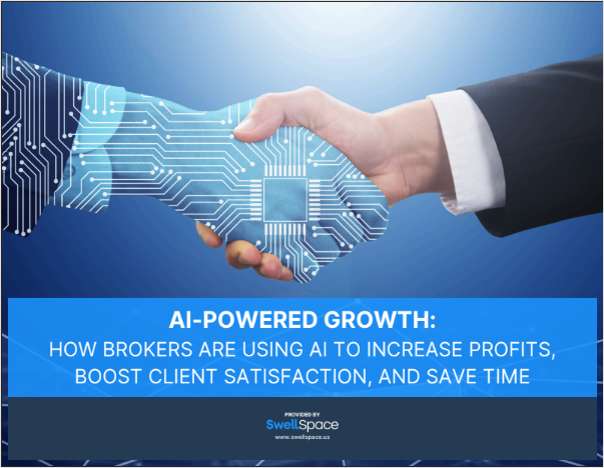 The traditional mainstream benefits are no longer enough to build a competitive compensation package, as new offerings evolve to address issues such as parental leave, emotional health and financial wellness. (Image: Shutterstock)
The traditional mainstream benefits are no longer enough to build a competitive compensation package, as new offerings evolve to address issues such as parental leave, emotional health and financial wellness. (Image: Shutterstock)
To compete in the war for talented and skilled workers, employers are in search of ways to enhance their overall value proposition and attract and retain the talent they need to propel their business forward. This time of dynamic change in the workplace presents an opportunity for brokers to broaden their consultancy. There has been a significant rise in buyers demanding advisement from their brokers beyond employee benefits.
Related: Expanding broker roles create new challenges, opportunities
We have already seen a shift with the rise of voluntary benefits. As these types of benefits become table stakes, the demand for brokers to incorporate them into their plan offerings is only going to expand. To adapt to the changing market and answer the call for more strategic counsel, brokers must understand the most in-demand solutions and the ways to effectively and seamlessly administer them to add value to their client relationships.
Recommend modern solutions to attract and retain talent
Employees today are looking for ways to enhance the overall quality of their lives. With each of those lives unique in terms of challenges and priorities, benefits packages must evolve to offer more personalization. The traditional mainstream benefits are no longer enough to build a competitive compensation package, as new offerings evolve to address parental leave, emotional health, financial wellness, student debt, learning and career development. Brokers must embrace these new strategies to win share and retain their base, or they risk falling behind.
- Financial wellness: Among the top rising benefits offerings are those aimed at financial wellness. Only 24 percent of employers in 2015 offered financial wellness benefits, a figure that has more than doubled (53 percent) today. From budget expertise to savings assistance and goal setting, financial wellness programs can add value to workers' lives and reduce stress, contributing to satisfaction and productivity in the workplace.
- Student loan assistance: An emerging benefit category, student loan repayment programs are growing in popularity as younger generations comprise a significant part of the workforce. Student loan debt in the U.S. now totals more than $1.5 trillion, making it the second-highest consumer debt category behind only mortgage debt. As employers realize the opportunity to monetize these offerings, the U.S. employer adoption rate for student loan assistance programs has more than doubled since 2015 to approximately 8 percent in 2019, a rate that is only going to grow.
- Preventative health care: Medical benefits strategies are shifting from a reactive approach to a more proactive one. Employers are beginning to focus more on preventative health care and programs that foster overall health and wellness. These offerings include gym memberships and telemedicine options, as well as mobile gamification of different health challenges to earn points off a deductible. By incentivizing health education and providing access to more affordable care, employers can lower insurance costs.
Leverage technology to reduce client administration
HR departments spend 46 percent of their time on administrative tasks, which limits their ability to focus on more strategic initiatives. In a broker's role as trusted advisor, they can help clients effectively utilize technology to build more efficient HR processes and save time on administrative tasks from the full range of HR activities, from benefits administration, recruiting and onboarding to financial wellness.
Employers can rely on an all-in-one option, which essentially consists of one HR system that offers all the pillars of human capital management (HCM). As employers' needs grow and technology evolves, employers can alternatively opt for a more open HCM ecosystem environment. A digital HR storefront like ADP Marketplace gives employers choice and flexibility to build an HR system based on their specific needs. They can explore, try, buy and implement pre-built integrations to offer modern benefit solutions.
By understanding the technology employers can leverage to increase efficiencies and recommending modern benefits solutions to help attract and retain talent, brokers can stay ahead of the curve and help set clients apart from their competitors. Rising to meet key business challenges in lock-step will only help to deepen the client relationship.
Stephen Kapusta is vice president of channel strategy at ADP.
Read more:
Complete your profile to continue reading and get FREE access to BenefitsPRO, part of your ALM digital membership.
Your access to unlimited BenefitsPRO content isn’t changing.
Once you are an ALM digital member, you’ll receive:
- Breaking benefits news and analysis, on-site and via our newsletters and custom alerts
- Educational webcasts, white papers, and ebooks from industry thought leaders
- Critical converage of the property casualty insurance and financial advisory markets on our other ALM sites, PropertyCasualty360 and ThinkAdvisor
Already have an account? Sign In Now
© 2025 ALM Global, LLC, All Rights Reserved. Request academic re-use from www.copyright.com. All other uses, submit a request to [email protected]. For more information visit Asset & Logo Licensing.








